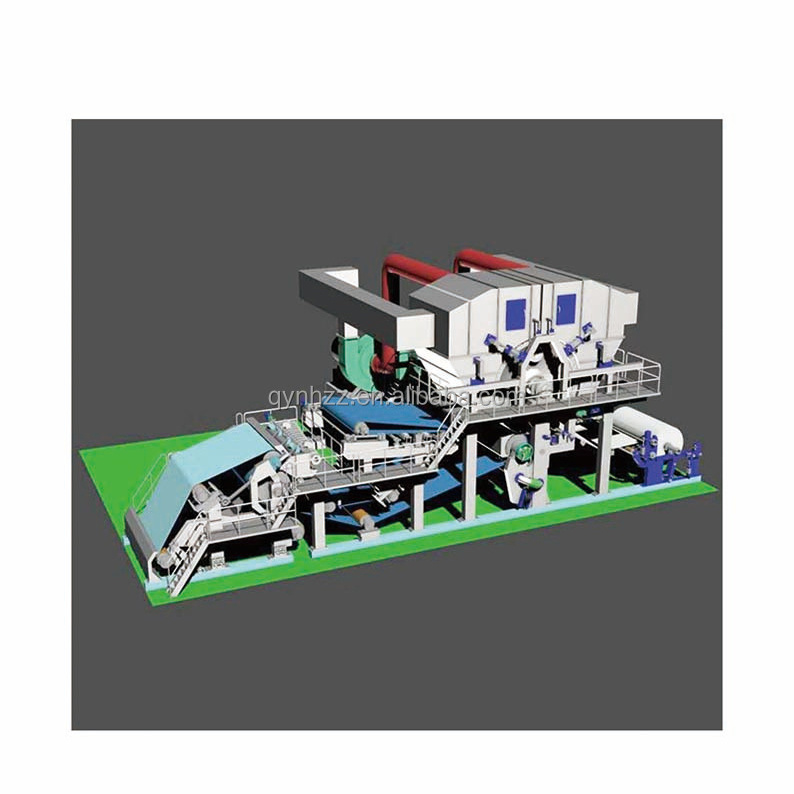Enhancing Paper Quality with Innovative Dryer Fabrics: A Comprehensive Guide for Manufacturers
Release time:
2025-05-07
Enhancing Paper Quality with Innovative Dryer Fabrics Table of Contents 1. Introduction to Dryer Fabrics in Paper Manufacturing 2. Understanding the Role of Dryer Fabrics in Paper Quality 2.1 The Basics of Paper Drying 2.2 How Dryer Fabrics Influence Paper Characteristics 3. Types of Dryer Fabrics and Their Features 3.1 Traditional vs. Innovative Dryer Fabrics 3.2 Material Composit
Enhancing Paper Quality with Innovative Dryer Fabrics
Table of Contents
1. Introduction to Dryer Fabrics in Paper Manufacturing
2. Understanding the Role of Dryer Fabrics in Paper Quality
2.1 The Basics of Paper Drying
2.2 How Dryer Fabrics Influence Paper Characteristics
3. Types of Dryer Fabrics and Their Features
3.1 Traditional vs. Innovative Dryer Fabrics
3.2 Material Composition and Its Impact on Performance
4. Benefits of Using Innovative Dryer Fabrics
4.1 Increased Efficiency in Paper Production
4.2 Enhanced Paper Quality and Consistency
5. Selecting the Right Dryer Fabric for Your Application
5.1 Factors to Consider When Choosing Dryer Fabrics
5.2 Case Studies of Successful Implementations
6. Maintenance and Care for Dryer Fabrics
7. Future Trends in Dryer Fabric Technology
8. Frequently Asked Questions (FAQs)
9. Conclusion
1. Introduction to Dryer Fabrics in Paper Manufacturing
In the world of paper manufacturing, achieving high-quality output is paramount. **Dryer fabrics**, an essential component in the drying phase of paper production, play a crucial role in enhancing paper quality. These fabrics not only affect the drying efficiency but also influence the overall characteristics of the final product. As manufacturers strive for excellence, understanding the innovations in dryer fabric technology becomes imperative.
2. Understanding the Role of Dryer Fabrics in Paper Quality
Dryer fabrics are used to transfer heat from the dryer cylinders to the wet paper sheet, facilitating moisture removal. Their function extends beyond mere drying; they also contribute to the paper’s final properties and performance.
2.1 The Basics of Paper Drying
During the paper-making process, a wet sheet of fiber travels through various stages, including pressing and drying. The drying process is essential in achieving the desired moisture content, which significantly impacts the paper's strength, opacity, and printability.
2.2 How Dryer Fabrics Influence Paper Characteristics
The interaction between the dryer fabric and the paper sheet affects not only drying efficiency but also surface quality. The choice of fabric can influence characteristics such as smoothness, gloss, and dimensional stability.
3. Types of Dryer Fabrics and Their Features
With advancements in material science, the market has seen the emergence of various types of dryer fabrics, each designed to meet specific performance criteria.
3.1 Traditional vs. Innovative Dryer Fabrics
Traditional dryer fabrics are often made from woven polyester or nylon. Innovative dryer fabrics, however, utilize advanced materials such as **polypropylene blends and engineered polymers**, offering superior performance attributes like enhanced thermal conductivity and moisture absorption.
3.2 Material Composition and Its Impact on Performance
The material composition plays a vital role in the performance of dryer fabrics. Fabrics designed with a higher thermal conductivity can expedite the drying process, while those with improved moisture-wicking properties can prevent fabric clogging and prolong service life.
4. Benefits of Using Innovative Dryer Fabrics
The integration of innovative dryer fabrics into the production line yields numerous advantages for manufacturers aiming to enhance paper quality.
4.1 Increased Efficiency in Paper Production
Innovative dryer fabrics improve heat transfer, which can result in reduced drying times. This efficiency not only accelerates production rates but also decreases energy consumption, leading to cost savings in manufacturing.
4.2 Enhanced Paper Quality and Consistency
With improved moisture control, manufacturers can produce paper with more consistent properties. This reliability is especially critical for high-end applications, such as printing and packaging materials, where quality is non-negotiable.
5. Selecting the Right Dryer Fabric for Your Application
Choosing the right dryer fabric is essential for maximizing performance and ensuring quality output.
5.1 Factors to Consider When Choosing Dryer Fabrics
Key factors include the fabric's thermal properties, resistance to wear and tear, and compatibility with the specific paper grades being produced. Additionally, manufacturers should consider the fabric's ease of maintenance and cleaning procedures.
5.2 Case Studies of Successful Implementations
Several case studies demonstrate the successful implementation of innovative dryer fabrics. For instance, a major paper manufacturer reported a **20% increase in production efficiency** after switching to a high-performance dryer fabric, resulting in significant cost reductions and improved product quality.
6. Maintenance and Care for Dryer Fabrics
Proper maintenance of dryer fabrics is crucial for sustaining their performance over time. Regular cleaning and inspection can prevent issues such as fabric clogging and damage, extending the fabric's service life and maintaining production quality.
7. Future Trends in Dryer Fabric Technology
The future of dryer fabric technology looks promising, with ongoing research focused on developing materials that offer even better performance. Innovations such as self-cleaning fabrics and enhanced moisture management systems are on the horizon, indicating a significant shift in how paper manufacturers approach their drying processes.
8. Frequently Asked Questions (FAQs)
**Q1: What are dryer fabrics made of?**
Dryer fabrics are typically made from synthetic materials like polyester, nylon, or polypropylene, designed to withstand high temperatures and moisture conditions.
**Q2: How do I know which dryer fabric is right for my paper type?**
Consider the specific requirements of your paper, including moisture content, weight, and intended use. Consulting with fabric suppliers can also provide valuable insights.
**Q3: Can innovative dryer fabrics reduce energy costs?**
Yes, by improving drying efficiency and reducing drying times, innovative dryer fabrics can lead to lower energy consumption and associated costs.
**Q4: How often should dryer fabrics be cleaned?**
Regular cleaning schedules should be based on production levels and the type of paper being processed. Typically, cleaning every few weeks is advisable to prevent buildup.
**Q5: What are some signs that a dryer fabric needs to be replaced?**
Look for signs such as visible wear, reduced drying efficiency, or quality issues in the paper product, as these can indicate that a fabric is nearing the end of its useful life.
9. Conclusion
In conclusion, innovative dryer fabrics play a pivotal role in enhancing paper quality in the manufacturing process. By understanding their functionality, selecting the right materials, and implementing proper maintenance strategies, manufacturers can significantly improve both production efficiency and product quality. As technology continues to evolve, staying informed about the latest advancements in dryer fabric technology will be key to maintaining a competitive edge in the paper industry. Embracing these innovations not only leads to superior paper products but also fosters sustainability and cost-effectiveness in manufacturing practices.
Qinyang NH Paper Machinery Industrial Group Co., Ltd.
WhatsApp/WeChat:Cathy Wang 0086-15721522521
WhatsApp/WeChat:Ailsa Zhao 0086-18300605679
ADD: Jianshe Road(South),Qinyang City Henan Province,China

Cathy Wang

Alisa Zhao

TikTok
Copyright©Qinyang City Nianhai Net Industry Co., Ltd.
SAF Coolest v1.3.1.1 设置面板 AIVSX-ZBBO-FQSEE-ZAS
无数据提示
Sorry, the current column has no content for the time being.!
You can view other columns or returnHome Page




